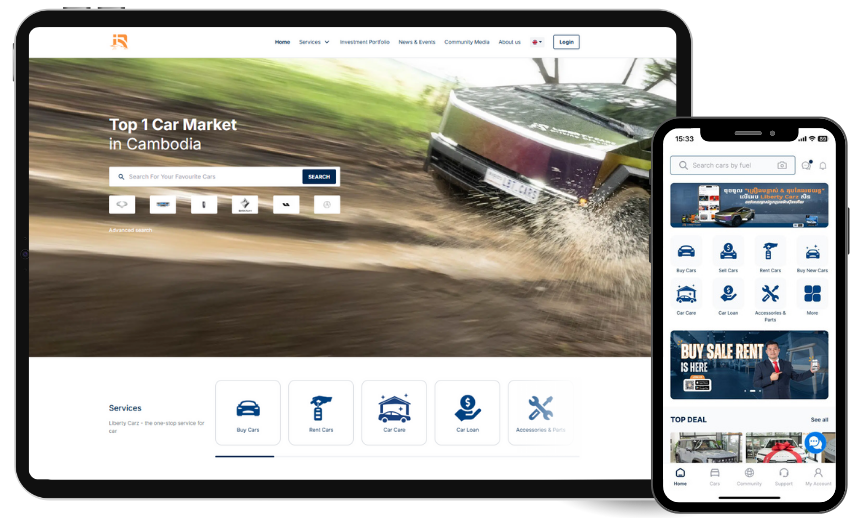
It all started with a simple vision: making car ownership and rental in Cambodia effortless, accessible, and transparent. For many Cambodians, navigating the automotive market was a daunting task, filled with complexities and uncertainties. Liberty Carz emerged as the hero to solve this challenge, offering a seamless digital solution to connect buyers, sellers, and renters under one platform.
But how did Liberty Technology bring this vision to life?
The story of Liberty Carz begins with a team of innovators at Liberty Technology, who recognized the growing demand for a modernized automotive marketplace in Cambodia. The automotive industry was ripe for disruption, and the team saw an opportunity to empower Cambodians with technology.
The challenge was clear: build an intuitive platform that caters to all automotive needs, from buying and selling to renting and financing. But more than that, it needed to inspire trust in a market where personal connections and traditional methods were deeply ingrained.
Creating Liberty Carz wasn’t just about coding an app; it was about creating an experience. The team started by mapping the journey of a typical car buyer, seller, and renter in Cambodia. What were their pain points? How could technology simplify their lives?
The result was a platform packed with user-centric features:
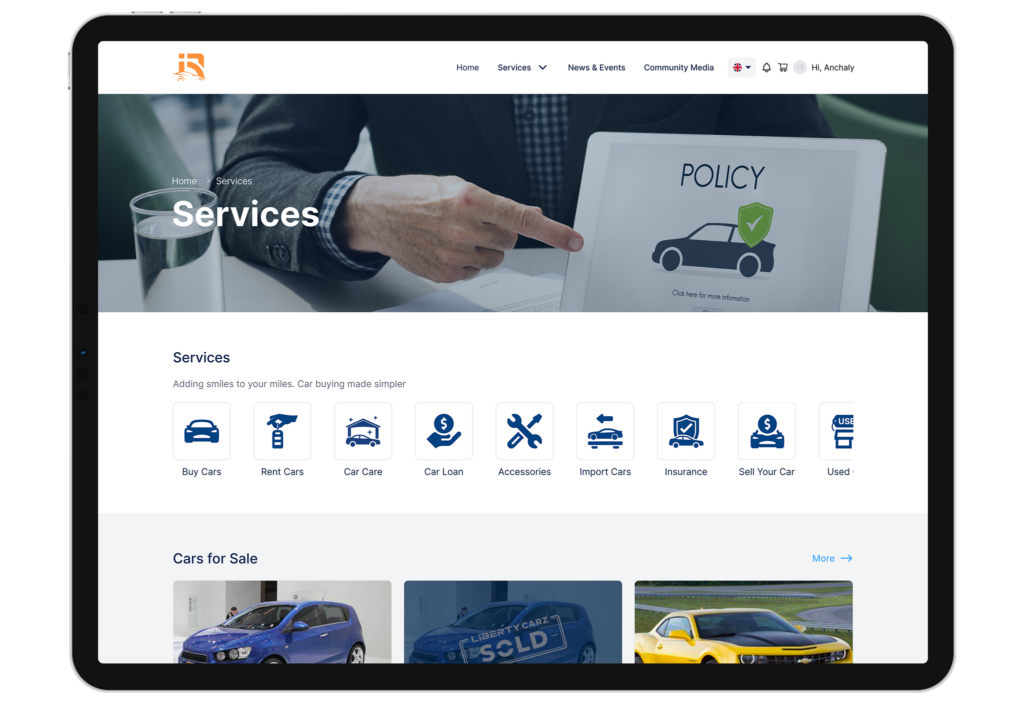
Liberty Carz launched with a promise: to “Drive Dreams” for Cambodians. It wasn’t just about buying or renting cars; it was about creating opportunities for individuals and families to improve their mobility and elevate their quality of life.
The launch was met with resounding success. Within months, thousands of users downloaded the app, and the platform became home to over 1,000 vehicles, listed by hundreds of trusted dealers and individuals.
One user shared their experience:
“I had been searching for a car for months, but it was difficult to find something reliable. Liberty Carz changed everything. I found my dream car, secured financing through the app, and completed the process in just days!”
For Liberty Carz, this is just the beginning. The team at Liberty Technology continues to innovate, adding new features and expanding services to make the platform even more robust. Plans are underway to integrate advanced AI-driven search capabilities, eco-friendly vehicle options, and partnerships with leading insurance providers.
Liberty Carz isn’t just a platform; it’s a movement. It’s about empowering Cambodians to dream bigger, move faster, and achieve more.
So, what’s your next journey? With Liberty Carz, the possibilities are endless.
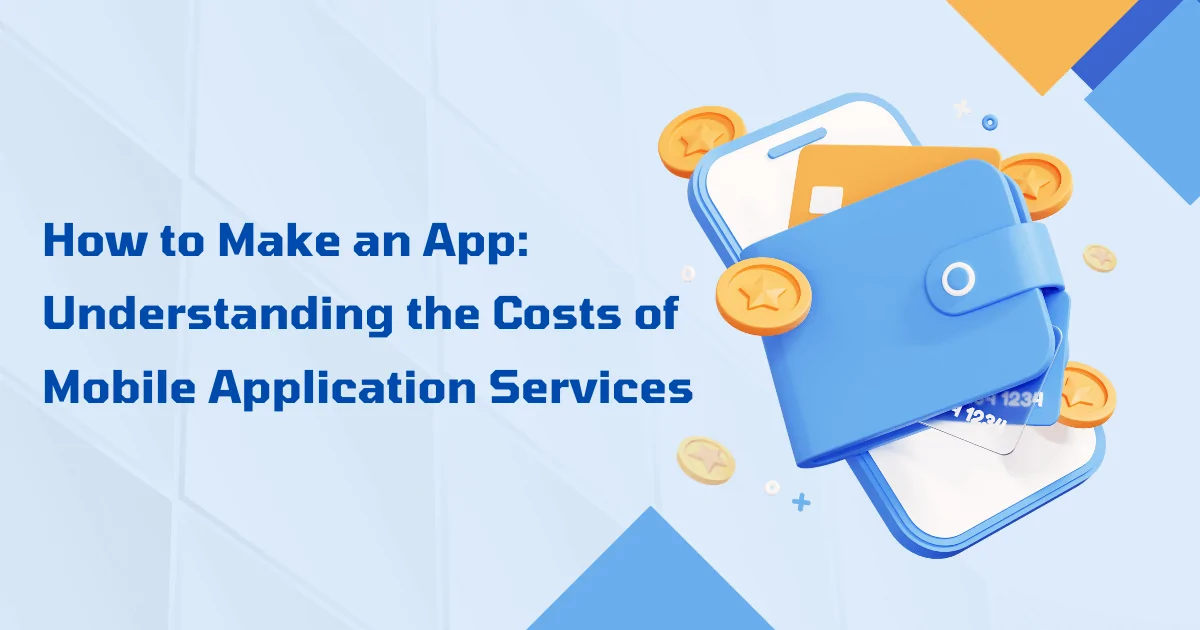
Mobile applications have revolutionized how businesses engage with customers and partners, providing SMBs with a powerful tool to enhance operations and drive growth. But how much does it cost to create an application? The price can vary widely based on factors like app complexity, target platforms, and the location of your development team. This understanding helps in effective budgeting and ensures that you are prepared for any financial commitments that might arise during the project. A simple app with basic functionality might be relatively inexpensive, while a highly complex app with advanced features could require a significant investment.
Knowing the factors that affect app creation costs ahead of time can save you from unpleasant surprises. It enables you to allocate your budget wisely and prioritize features that add the most value to your app. By understanding the cost drivers, you can make strategic decisions, such as whether to develop an app in-house or outsource, and which platform to develop first.
Simple apps, such as calculators and flashlight apps, have limited features and functionality. These apps typically cost between $10,000 and $40,000 to develop. Despite their simplicity, it is essential to ensure they are user-friendly and perform their intended purpose efficiently.
Moderately complex apps include social media and e-commerce apps. These apps require a more extensive development process, including backend infrastructure, user authentication, and integration with third-party services. The cost for developing these apps usually ranges from $30,000 to $500,000.
Highly complex apps, such as banking and healthcare apps, come with advanced features like secure login, data encryption, and integration with existing systems. Developing such apps can be quite costly, often exceeding $500,000 and going up to over $1 million. These apps require a high level of security and compliance with industry regulations.
Developing an app for Android involves specific costs related to the platform’s characteristics, such as compatibility with various device models and screen sizes. The development cost for Android apps can be influenced by the need for extensive testing across multiple devices.
iOS app development, particularly for the App Store, might have different cost considerations, such as compliance with Apple’s strict guidelines and quality standards. However, iOS apps often benefit from a more uniform device environment, which can simplify the development process.
Developing a hybrid or web app can be a cost-effective solution as it allows for a single codebase that runs across multiple platforms. This approach can significantly reduce development time and costs, typically ranging from $20,000 to $250,000, depending on the app’s complexity.
The geographic location of your development team is one of the most important elements influencing app creation expenses. Labor cost, experience, and entire job quality can vary significantly depending on where your team is based. Let’s take a closer look at how various places compare.
High labor costs: Hiring a development team in North America (e.g., the United States or Canada) or Western Europe (e.g., the United Kingdom, Germany, or France) is usually the most expensive alternative. Developers in these areas earn greater wages, which translates into higher project expenses. For example, hourly prices for developers in these countries can range from $100 to $200.
Expertise and Quality Assurance: Despite the high expenses, these regions’ teams are well-known for their competence and thorough quality assurance standards. These developers frequently have access to the most recent technologies, training, and resources, ensuring that the apps they create are innovative and follow industry best practices. Partnering with teams in these regions may also improve communication due to linguistic and cultural alignment, especially for organizations situated in Western countries.
Time Zones and Communication: Given the overlapping time zones and cultural familiarity, interaction with local teams can improve communication and project management for organizations in North America and Western Europe.
Cost-Effective Talent: Eastern Europe (such as Poland, Ukraine, and Romania) has emerged as a preferred app development location due to its low prices and high standards. This region’s development costs are normally in the midrange, with hourly prices ranging from $30 to $75. When compared to North America and Western Europe, this region provides qualified developers at a far lower cost.
High Skill Levels: Eastern European developers are well-known for their outstanding technical talents, notably in software engineering, cybersecurity, and user experience/user interface design. Many developers in this region have advanced degrees and are fluent in English, making communication easier and project execution more efficient.
Growing Tech Hubs: Countries such as Poland and Ukraine are fast developing tech centers with a strong ecosystem of developers, entrepreneurs, and technology communities. This growth has created a competitive climate in which developers are continually polishing their skills, resulting in excellent output.
Proximity to Western Europe: Eastern Europe has the advantage of proximity, minimizing time zone disparities and enabling for more frequent in-person meetings if needed.
Asia is renowned for its affordable app development, with hourly rates typically ranging between $20 and $50, making it an attractive option for budget-conscious companies. Cambodia and Vietnam are becoming important places for mobile app development in Southeast Asia.
Vietnam’s tech sector has seen rapid growth, generating $69 billion in revenue in 2023. This growth makes Vietnam a popular choice for outsourcing due to its combination of low labor costs and robust IT infrastructure, which together deliver cost-effectiveness alongside high skill levels. The workforce in Vietnam is notably young, which infuses the tech scene with fresh ideas and energy. Additionally, the country’s strong focus on STEM education ensures a steady stream of skilled graduates each year, capable of working with key programming languages and achieving high global rankings.
Meanwhile, Cambodia’s tech industry is also expanding quickly, particularly in mobile app development. This surge is driven by an increase in smartphone usage, creating greater demand for mobile apps. The Cambodian government, along with a vibrant startup culture, actively supports tech innovation, further accelerating growth. Moreover, an increase in educational programs and coding bootcamps is equipping a new generation of tech-savvy professionals ready to meet the industry’s demands.
At Liberty Technology, we help turn your mobile app ideas into reality. We embrace diversity and employ skilled developers from both Cambodia and Vietnam who have a deep understanding of the Asian market. Our focus at Liberty Technology is on creating practical, user-friendly solutions.
Choosing the right development team is a critical decision that significantly impacts the quality, timeline, and cost of your app project. There are three primary options to consider: In-house Developers, Freelancers, and App Development Agencies. Each comes with its own set of advantages, challenges, and cost implications. Understanding these can help you make an informed decision that aligns with your project goals, budget, and timeline.
Advantages:
In-house teams facilitate seamless communication and collaboration since team members work together in the same physical or virtual space. This setup allows for quick decision-making and efficient problem-solving.
According to a report by Deloitte, effective communication within in-house teams leads to improved project outcomes and higher productivity.
In-house developers are more likely to have a full understanding of your company’s vision, values, and long-term goals, resulting in solutions that are well linked with your business requirements.
They can quickly adapt to changing project requirements and are invested in the company’s success.
With direct oversight and consistent workflows, in-house teams can maintain high-quality standards and ensure consistency throughout the development process.
Continuous integration and development practices are easier to implement and monitor internally.
Having developers on-site ensures that any bugs, issues, or updates can be addressed promptly without delays associated with external coordination.
This is particularly beneficial for apps requiring frequent updates or those operating in dynamic markets.
Challenges:
Recruiting, training, and maintaining in-house developers incurs significant costs, including pay, benefits, office space, and equipment.
According to Glassdoor, the average salary for a mobile app developer in the United States ranges from $90,000 to $140,000 annually, excluding additional overhead costs.
Finding skilled developers can be time-consuming and competitive, especially in tech hubs where demand is high.
Retaining talent requires ongoing investment in employee development and satisfaction initiatives.
In-house teams may have expertise limited to specific technologies or platforms, which could be restrictive if your project requires diverse or specialized skills.
Scaling the team up or down based on project needs can also be challenging and resource-intensive.
Suitable Scenarios:
In-house development teams are ideal for long-term projects with ongoing development and maintenance needs. They are particularly well-suited for companies that require full control over the development process, ensuring that every aspect of the app aligns closely with business objectives. Additionally, in-house teams are the preferred choice for projects where confidentiality and security are paramount, as they allow sensitive data and intellectual property to remain within the company.
Cost Implications:
While hiring an in-house team involves high upfront and ongoing costs due to salaries, benefits, and operational expenses, it can be a cost-effective solution over time, especially for projects that are continuous and evolve regularly. The investment in an in-house team can pay off by providing consistent quality, faster iteration cycles, and closer alignment with the company’s strategic goals.
Freelancers typically offer cheaper fees than agencies or in-house teams, making them an affordable option for smaller tasks. However, managing a team of freelancers can be challenging in terms of coordination and consistency in the final product.
Advantages:
Challenges:
The quality of work can vary significantly among freelancers, and there is a risk of inconsistent output.
Some freelancers may have limited availability or may not be fully committed to your project, leading to delays and unmet expectations.
A survey by Payoneer indicates that while many freelancers deliver high-quality work, vetting and selecting reliable professionals remains a common challenge for clients.
Freelancers may not be available for ongoing maintenance and updates after the project’s completion, necessitating additional hiring efforts for future needs.
Suitable Scenarios:
Cost Implications:
Development agencies often provide a comprehensive range of services, including design, development, testing, and deployment. While they might be more expensive, they provide a comprehensive solution and can ensure a high-quality product.
Advantages:
The planning stage sets the foundation for the entire project and typically accounts for about 10% of the total cost. During this phase, requirements are gathered, and the project scope is defined. Effective planning can prevent scope creep and ensure the project stays on budget.
The app’s user interface (UI) and user experience (UX) must be designed carefully to ensure success. The design stage usually makes up about 15% of the total cost. This phase includes creating wireframes, prototypes, and the overall look and feel of the app.
The development stage is where the core work happens—coding and integrating various features. This stage consumes the bulk, around 60%, of the total cost. It’s crucial to have a well-structured development process to ensure all functionalities are implemented effectively.
Testing is critical to ensure the app works as intended without any bugs or performance issues. This stage typically accounts for 10% of the total cost. It includes a variety of testing methods, including functional testing, performance testing, and user acceptance testing.
Deploying the app involves launching it on platforms like the App Store or Google Play. The deployment stage usually represents about 5% of the total cost. This phase also includes activities like preparing marketing materials and meeting platform-specific requirements.
Beyond the visible costs of development, several hidden costs can impact your budget:
Many apps integrate with third-party services like payment gateways, social media APIs, and analytics tools. These integrations often come with their own costs, including licensing fees and additional development time.
Implementing security measures like encryption and two-factor authentication are crucial, especially for apps handling sensitive data. These features can increase development costs but are essential for user trust and compliance with regulations.
Submitting an app to platforms such as the App Store or Google Play incurs expenses. These include one-time submission fees and ongoing hosting charges, which can influence your overall budget.
Post-launch, an app requires regular maintenance and updates to fix bugs, add new features, and ensure compatibility with new OS versions. Maintenance expenditures can be a large continuing expense.
To reach your target audience, you will need to invest in marketing and promotions. This includes costs for advertising, social media campaigns, and other marketing activities to drive downloads and user engagement.
Estimating the cost of creating an app depends on various factors, including the type of app, the platforms it will run on, and the complexity of its features. For a more accurate estimate, you can use online cost calculators or consult with professionals who can provide tailored advice based on your specific needs.
The cost of developing an app varies greatly based on its nature and complexity. Simple apps can cost between $10,000 and $40,000, moderately complicated apps between $30,000 and $500,000, and highly complex apps over $1 million. For a more precise estimate, consider using online cost calculators or consulting with professional app developers.
There are various online tools and resources to help estimate app development costs. Cost calculators and case studies can provide a more accurate picture based on specific requirements and features.
1. Choose the Right Platform:
Deciding between developing for a single platform or opting for cross-platform development can impact costs. Developing for a single platform initially can reduce costs and time to market.
2. Simplify Design:
Keeping the design simple can save money without compromising user experience. Focus on essential features and intuitive navigation to ensure usability.
3. Use Third-Party APIs:
Using existing APIs can reduce development time and expenses. For example, using payment services like Stripe or PayPal can expedite the integration of payment features.
4. Optimize for Scalability:
Designing your app with scalability in mind can prevent future costs associated with redesigning or reworking the app as user demand grows.
5. Work with Experienced Teams:
Hiring experienced developers can provide cost-effective solutions, ensuring that the app is developed efficiently and meets quality standards.
Marriott modernized its app by re-platforming, which helped reduce development and maintenance costs. This example illustrates the benefits of leveraging modern technologies to optimize costs.
Understanding the costs associated with mobile application service, how to make an app is crucial for effective budgeting and planning. Factors such as app complexity, platform selection, geographic location of the development team, and app type significantly influence costs.
To acquire a more realistic estimate for your project, use online cost calculators or talk with expert app developers. With Liberty Technology, you will receive a complete analysis, allowing you to make more informed decisions about your app development path.
Contact Liberty Technology today to learn more about how we can help your business thrive in the digital landscape.
For inquiries, please contact [email protected] or call 023 868 683.
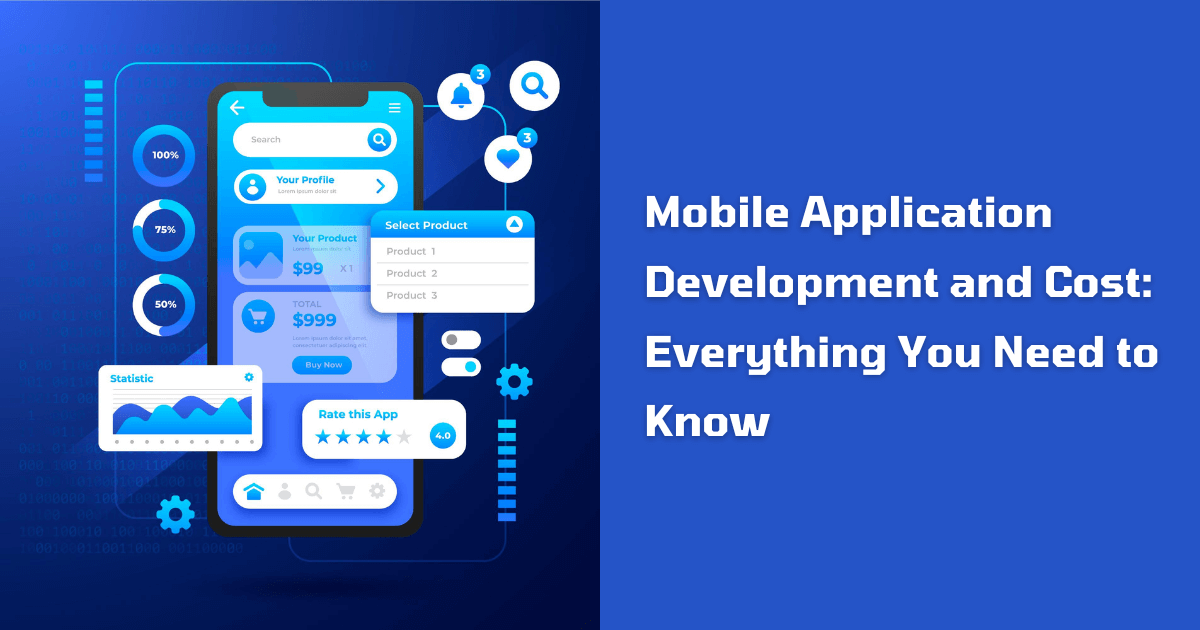
Creating a mobile application is a complex process requiring careful planning, creativity, and technical expertise. Understanding the stages and technologies involved in app development is critical for both Android and iOS. This guide breaks down the stages of app creation, providing a clear roadmap to help you develop a fully optimized mobile app that drives your business forward.
Mobile phones have become as essential as a purse or wallet, driving retail purchases, guiding travel, and capturing memories. They are also revolutionizing business, with Gartner predicting that 70% of all access to business systems will be via mobile devices. As companies increasingly rely on smartphones and tablets, building mobile apps that integrate with corporate systems has become a top priority. Therefore, how soon can you get started to seize the opportunities it presents?
Every successful app begins with a well-defined idea. Before jumping into design or development, it’s essential to brainstorm and refine your concept. Consider: What problem does my app solve? Who is my target audience? What makes my app unique? By answering these questions, you can create a strong foundation for your project. This clarity not only helps in the development phase but also influences the overall app creation cost. Understanding how to create an app idea and ensuring it addresses specific needs is crucial for success.
Start by identifying a gap in the market or a specific need that your app can address. Conduct brainstorming sessions with your team or stakeholders, exploring different angles and features that could make your app stand out. Once you have a rough concept, refine it by considering user feedback, potential challenges, and long-term viability. This process is crucial to avoid unnecessary expenses down the line, as a well-defined idea can streamline the development process and reduce costs. Ultimately, developing a unique app concept can be the key to differentiating your app in a competitive market.

Market research is a critical step in the app creation process. Understanding your competitors and identifying your target audience can help you tailor your app to meet user needs and preferences. By conducting thorough market research for app creation, you can analyze existing apps in your niche, seeing what works and what doesn’t. This analysis provides valuable insights that can save both time and money during development by avoiding common pitfalls and highlighting opportunities for differentiation.
Knowing what your audience wants is key to creating an app that resonates with users. To effectively understand your app audience, conduct surveys, focus groups, or interviews to gather insights into user behavior, preferences, and pain points. This information will guide your design and development decisions, ensuring that your app not only meets user expectations but also stands out in a crowded marketplace. By aligning your app’s features with user needs, you increase the likelihood of success and user engagement.
Clearly defined goals are essential for measuring the success of your app. Whether you aim to increase brand awareness, generate revenue, or provide a valuable service, knowing your objectives will guide every decision you make throughout the development process. Setting app goals early on provides clarity, helping to prioritize features and streamline the development process. This focus not only ensures that your app aligns with your overall business strategy but also influences the app creation cost by preventing scope creep and unnecessary expenses.
Once you have defined your app’s purpose, it’s crucial to establish measurable goals that can be tracked over time. These might include user acquisition rates, engagement metrics, or revenue targets. Defining app success metrics early in the process allows you to establish benchmarks for evaluating your app’s performance after launch. This approach ensures that your app not only meets its initial objectives but also continues to evolve and improve based on real-world data, making your app more successful in the long run.
Design is a critical aspect of app development, and it begins with wireframing and creating mockups. Wireframes act as a blueprint for your app, outlining the layout, navigation, and overall structure. This initial design phase is essential in visualizing how users will interact with your app, ensuring a seamless user experience. Understanding how to design an app effectively starts with creating detailed wireframes that lay the foundation for a user-friendly interface.
Wireframes are more than just aesthetics; they also play an important part in determining functionality. By mapping out each screen and interaction, you can identify potential issues early in the design process, reducing the need for costly revisions later. Utilizing app wireframing techniques allows you to address design challenges before they become problems, streamlining the development process and helping you stay within budget and on schedule. Effective wireframing not only enhances the user experience but also contributes to the overall success of your app by ensuring that every element serves a purpose.
A successful app must be both visually appealing and easy to use. Mobile UI/UX design tips focus on creating an interface that users can navigate intuitively. This involves choosing the right colors, fonts, and layout, as well as ensuring that the app responds smoothly to user input. A well-designed UI/UX can significantly impact user satisfaction and retention, directly influencing your app’s overall success. The goal is to design an interface that feels natural to the user, making every interaction seamless and enjoyable.
To create a user-friendly app, it’s essential to adhere to best practices in mobile UI/UX design. This includes maintaining consistency across screens, minimizing user effort, and providing clear feedback for user actions. By following these principles, you can focus on creating a user-friendly app that not only attracts users but keeps them engaged over time. Prioritizing the user experience helps your software stand out in a crowded marketplace, motivating users to return and engage with it on a frequent basis.
An MVP, or Minimum Viable Product, is a simplified version of your app that includes only the essential features required to fulfill its primary purpose. The MVP development process allows you to launch quickly, test the market, and gather valuable user feedback without the need for a fully developed product. This approach is cost-effective, enabling you to manage app creation costs while ensuring that your app meets the basic needs of your target audience. By focusing on the core functionalities, you can make informed, data-driven decisions for future development phases.
After your MVP is ready, it is crucial to conduct tests with real users to gather feedback. Testing app prototypes in this early stage provides invaluable insights into how users interact with your app, highlighting areas for improvement before a full-scale launch. This user feedback allows you to refine and enhance your app, ensuring it resonates with your audience. By iterating based on actual user needs and preferences, you can create a product that not only meets but exceeds expectations, all while keeping development costs in check.
When it comes to app development, you have several options: native apps, hybrid apps, and Progressive Web Apps (PWAs). Native app development is creating an app tailored to a specific operating system, such as iOS or Android. This approach offers the best performance, seamless integration with device features, and an optimal user experience, but it often comes with a higher development cost. On the other hand, hybrid app creation allows you to develop a single app that can run on multiple platforms, making it more cost-effective. However, hybrid apps might not match the performance and user experience of native apps due to their reliance on web technologies. PWA development provides a web-based solution that can be accessed via a browser, offering a lower-cost alternative with limited functionality and offline capabilities compared to native apps.
Your choice between native, hybrid, and PWA development will depend on your app’s specific requirements, target audience, and budget. Native app development is usually the best option for programs that need excellent performance and access to device-specific functionality, despite the increased expenses. However, if your priority is to reach a broader audience across different platforms while keeping costs in check, a hybrid app might be more suitable. For businesses seeking a budget-friendly option with basic functionality and ease of deployment, PWAs can be an excellent choice. By understanding the pros and cons of each option, you can make an informed decision that aligns with your project goals and financial considerations.
Coding is the backbone of app development, and the choice of programming language plays a significant role in shaping the app’s functionality, performance, and cost. The principal programming languages for iOS apps are Swift and Objective-C. Swift is the more current and popular option due to its ease of use, safety features, and performance efficiency. Objective-C, although older, is still used in maintaining and updating legacy iOS apps. Java and Kotlin are the most popular languages for developing Android applications. Java has been the traditional choice, while Kotlin is increasingly favored for its concise syntax and interoperability with Java. Each language has its strengths and weaknesses, and your choice may impact the overall app creation cost, timeline, and future scalability.
In addition to picking the suitable programming language, selecting the appropriate Integrated Development Environment (IDE) is critical for a successful development procedure. Xcode is the standard IDE for iOS app development, offering a comprehensive suite of tools for coding, testing, and debugging in Swift and Objective-C. For Android development, Android Studio is the preferred IDE, providing a powerful environment for working with Java and Kotlin. These app development tools are essential for efficient coding, as they streamline the development workflow, help identify and fix bugs, and support a wide range of testing and debugging features. Understanding how to code an app effectively involves not only mastering the language but also leveraging the right tools to ensure a successful and efficient development process.
Not everyone has the technical skills or resources to code an app from scratch. Fortunately, no-code app development and low-code app builders like GoodBarber and Appy Pie provide an accessible alternative. These platforms enable users to create apps using intuitive drag-and-drop interfaces, making app development feasible even for those without coding experience. With these tools, you can quickly design and deploy apps by selecting pre-built templates, customizing features, and integrating various functionalities—all without writing a single line of code.
While no-code and low-code platforms can greatly decrease the time and cost of app development, they have several limits. These solutions may not provide as much flexibility, performance, or scalability as traditional coding approaches. Apps created with these platforms may also face constraints in terms of advanced functionality or integration with complex systems. However, for simple apps or prototypes, no-code app development and low-code app builders provide a cost-effective and efficient way to bring your app idea to life. They are particularly useful for businesses looking to test an idea or launch a basic version of their app quickly, with the option to expand or refine the app later as needed.
Testing is a crucial phase in app development, ensuring that your app functions seamlessly across a wide range of devices and operating systems. Given the diversity of smartphones and tablets in use today, cross-device app testing is essential for identifying and fixing issues that could negatively impact the user experience. Whether your app is being used on an older Android device or the latest iPhone, thorough testing across different screen sizes, resolutions, and operating system versions helps ensure that all users enjoy a consistent, high-quality experience.
To achieve comprehensive testing, developers can leverage a variety of tools and methods. Emulators and simulators allow you to test your app on different virtual devices without needing physical hardware, while cloud-based testing platforms provide access to a broad array of real devices for more accurate testing. By following app testing best practices, such as testing on multiple devices, conducting performance testing, and using automated testing scripts, you can identify potential issues early and refine your app before launch. This approach not only improves user satisfaction but also minimizes the risk of negative reviews and costly post-launch fixes.
Beta testing is a critical step in the app development process, where you release your app to a limited audience to gather valuable user feedback before the official launch. Beta testing for apps allows you to identify bugs, usability issues, and other potential problems in a real-world setting. By involving actual users in this testing phase, you gain insights into how your app performs in the hands of your target audience, providing you with the information needed to refine and optimize your app.
After collecting feedback from beta testers, it’s essential to use this data to make necessary adjustments to your app. Whether it is fixing bugs, tweaking features, or enhancing the user interface, responding to user feedback for app development is crucial for delivering a polished final product. By actively incorporating user suggestions and addressing any identified issues, you can ensure that your app meets user expectations and stands out in the marketplace, ultimately leading to a more successful launch and sustained user engagement.
Even after extensive testing, bugs and performance issues can still arise in your app. App debugging techniques are critical for finding and correcting these issues, resulting in a smooth and flawless user experience. Debugging is not a one-time task but an ongoing process, especially as new devices and operating system updates can introduce unforeseen issues. Addressing these bugs promptly is essential to maintaining the quality and reliability of your app, which in turn helps retain user trust and satisfaction.
Quality assurance (QA) is not a phase that ends with your app’s launch; it’s a continuous process. Regular QA for mobile apps involves ongoing testing to ensure that updates and new features do not introduce new bugs or degrade performance. By integrating continuous testing and QA into your development cycle, you can consistently maintain a high standard of quality, ensuring that your app remains reliable and meets user expectations over time. Prioritizing QA helps you build a strong reputation for delivering a dependable and user-friendly app, which is key to long-term success.
Before launching your app, it is essential to submit it to the relevant app stores, such as the Apple App Store and Google Play Store. Each platform has specific guidelines and requirements that you must follow to ensure a successful submission. The App Store submission guide and Google Play Store submission process outline the necessary steps, including adhering to format specifications for app icons, screenshots, and descriptions. Following these guidelines is crucial for avoiding delays and ensuring that your app is approved on the first try, allowing you to reach your audience without unnecessary setbacks.
In addition to following submission guidelines, you will need to prepare various assets and information to optimize your app store listing. This comprises high-quality images of your app’s features, a captivating app description that emphasizes its advantages, and carefully chosen keywords to increase discoverability. These elements are not just formalities; they play a significant role in attracting users and driving downloads. Ensuring that your app store listing is polished and complete is a key factor in achieving a successful launch and maximizing your app’s visibility in a crowded marketplace.
App Store Optimization (ASO) is the process of enhancing your app’s visibility within app stores, such as the Apple App Store and Google Play Store. Optimizing important components of your app’s listing, including its title, description, and keywords, is an effective ASO best practice for increasing the probability of getting discovered by potential users. ASO is not a one-time task but an ongoing process that requires regular updates and adjustments to stay competitive as search algorithms and user behaviors evolve. Consistent optimization can lead to higher rankings in search results, more downloads, and greater overall success for your app.
Keywords are a critical component of optimizing app store listings. By carefully selecting and strategically placing relevant keywords in your app’s title and description, you can significantly improve its visibility in search results. However, ASO goes beyond just keywords. A well-crafted app description that clearly communicates the app’s benefits, coupled with high-quality visuals like screenshots and videos, can greatly enhance your app’s appeal. These elements work together to not only attract users but also convince them to download your app. Focusing on these key aspects of ASO ensures that your app stands out in a crowded marketplace, driving more organic traffic and increasing user acquisition.
After launching your app, it’s crucial to maintain its quality and relevance by releasing regular updates. These updates serve multiple purposes: they fix bugs, introduce new features, and enhance overall performance. Managing app updates effectively demonstrates to your users that you are committed to continually improving your product. Regular updates not only help in keeping your app functional and up-to-date with the latest technological standards but also play a key role in sustaining user engagement and satisfaction. A well-maintained app is more likely to gain a positive reputation, which can lead to increased downloads and higher user retention.
User reviews and feedback are invaluable resources for post-launch improvement. Responding to user reviews, particularly negative ones, is an essential practice that shows users you value their input and are dedicated to enhancing their experience. By addressing concerns, acknowledging suggestions, and making necessary improvements based on user feedback, you can build a strong, loyal customer base. This active engagement not only improves your app’s rating and reputation in the app stores but also fosters a sense of community and trust among your users, driving long-term success.
Marketing is an important part of your app’s success. Without effective promotion, even the most well-designed app may struggle to gain traction in a crowded market. Implementing a mix of app marketing strategies is essential to increase visibility and attract users. These strategies can include leveraging social media campaigns, content marketing, and paid advertisements. Each of these methods plays a unique role in driving awareness and engagement, helping your app stand out among competitors and reach its target audience.
Social media platforms are powerful tools for connecting with potential users and promoting apps online. By creating engaging content and interacting with your audience on platforms like Instagram, Twitter, and Facebook, you can build a community around your app and encourage word-of-mouth promotion. Complement your social media efforts with content marketing, such as blog posts, videos, or infographics, that educate users about your app’s features and benefits. Additionally, paid ads on platforms like Google and Facebook can drive targeted traffic to your app, increasing downloads and user engagement. By integrating these approaches, you can create a comprehensive marketing campaign that effectively promotes your app and maximizes its success.
Monetizing your app is an important issue, especially if your main purpose is to earn income. There are several monetization strategies available, including in-app purchases, ads, and subscriptions. Each of these models offers distinct advantages and disadvantages, depending on your app’s nature and target audience. In-app purchases allow users to buy additional content, features, or virtual goods within the app, making it an effective strategy for gaming apps or apps with premium features. Ads may generate a consistent income stream, but if not implemented carefully, they can have an impact on user experience. Subscriptions offer recurring revenue, making them ideal for content-rich apps that provide ongoing value, such as news apps, streaming services, or educational platforms.
Selecting the right monetization strategy is essential for maximizing revenue while maintaining a positive user experience. For instance, in-app purchases vs. ads may offer different levels of profitability and user satisfaction based on the type of app. A subscription model might be more appropriate for an app that delivers continuous, valuable content, such as a fitness or educational app. Conversely, in-app purchases may be more suitable for gaming apps, where users can buy virtual goods or unlock premium features. Ads can be effective in apps with high user engagement, provided they do not disrupt the user experience. By aligning your monetization strategy with your app type and user preferences, you can create a sustainable revenue stream that supports long-term success.
After your app is live, it’s critical to analyze performance data to gauge its success and find areas for improvement. App performance metrics such as user acquisition, retention rates, and revenue are key indicators that provide valuable insights into how well your app is performing. By regularly monitoring these KPIs, you can understand user behavior, pinpoint potential issues, and assess the overall effectiveness of your app. This data-driven strategy enables you to make educated decisions that improve the user experience and promote app success.
Various tools are available to successfully assess the performance of your app, including deep insights into user behavior, engagement, and revenue. These tools can generate comprehensive reports that help you analyze app success by tracking critical metrics such as session duration, churn rates, and in-app purchase behavior. By leveraging these analytics tools, you can identify trends, understand user preferences, and optimize your app’s features and functionality. Implementing a robust analytics strategy ensures that you can continuously improve your app, making data-driven decisions that contribute to its long-term success.
In conclusion, the process of creating a mobile app involves several critical steps, from defining your initial idea and conducting thorough market research to designing, developing, testing, and ultimately launching your app. Each stage presents its own challenges, but with careful planning and execution, you can develop an app that meets user needs and stands out in a competitive market. Understanding how to build a successful app necessitates not only creativity, but also a systematic approach to each stage of development.
Success in app development is not solely about having a great idea; it is about effectively executing that idea. By focusing on detailed planning, continuous testing, and regular updates, you can ensure that your app stays relevant and competitive in a rapidly evolving market. The steps to make an app successful include ongoing evaluation and improvement, which are essential for adapting to user feedback and industry changes. By committing to this iterative process, you can maintain a high-quality product that continues to meet user expectations and drives long-term success.
If you have been considering creating an app, now is the perfect time to start. With so many tools and resources accessible, even individuals without a technological experience may bring their app ideas to reality. Whether you decide to code from scratch or leverage a no-code platform, the possibilities are endless. Don’t let your ideas remain just ideas—start making your app today and turn your vision into a reality.
To embark on your app creation journey, take the first step by exploring the various development platforms that can simplify the process. Platforms like these offer the flexibility to create apps tailored to your specific needs and audience. Alternatively, if you prefer personalized guidance, consider consulting with app development experts who can provide the expertise and support necessary to bring your idea to fruition. Whether you are looking to DIY or seek professional help, there are numerous pathways to success—consult app development experts or dive into a development platform to get started today.
To find out how Liberty Technology can support the expansion and online success of your company, get in touch with us right now:
In today’s world, almost everyone has a smartphone, and the internet is faster than ever. We use our phones for everything – from shopping for groceries and attending online classes to playing games and watching movies.
Businesses have noticed how much time we spend on our phones, so they’re trying to attract customers with mobile apps. They’re using services to make apps that are fun and useful. And because people’s tastes and needs are always changing, new ideas and trends in making apps keep popping up.
In 2024, we expect to see lots of new and exciting things happen in the world of mobile apps. For example, we might see apps that use blockchain for secure payments or ones that let us learn in a fun way with augmented reality. There’s so much potential for new trends in mobile app development!
Join us as we explore the cutting-edge trends in mobile app development for 2024, understanding how they underscore the significant benefits of mobile app development in enriching user experiences and empowering businesses to meet and exceed customer expectations.
AR and VR technologies have moved beyond gaming and entertainment, finding their place in retail, education, and healthcare apps. These technologies offer immersive experiences, allowing users to visualize products in their own space or experience interactive learning environments.
Benefits:
AI and ML are increasingly integrated into mobile apps for personalized experiences, predictive analytics, and automation. From chatbots that improve customer service to personalized content recommendations, these technologies are making apps smarter and more user-friendly.
Benefits:
Known for its security features, blockchain technology is expanding its reach into mobile apps, particularly in finance, contracts, and secure transactions. It offers a decentralized and transparent way of conducting transactions, enhancing security and trust.
Benefits:
IoT technology is making mobile apps more functional by connecting them with smart devices and sensors. This integration allows for the monitoring and control of smart devices from anywhere, offering convenience and efficiency.
Benefits:
The rollout of 5G technology is set to revolutionize mobile app development by offering significantly faster internet speeds, lower latency, and the ability to handle more connected devices. This opens up possibilities for more complex and real-time applications.
Benefits:
With the rising use of digital assistants like Siri, Alexa, and Google Assistant, integrating voice technology into mobile apps is becoming a trend. This allows for hands-free control, accessibility improvements, and a more intuitive user experience.
Benefits:
At Liberty Technology, we understand the power of innovation and the impact it can have on your business.
With our mobile app development services, we are committed to turning your vision into reality using the latest technology. Our goal is to meet and exceed your demands, ensuring that your app not only stands out in the marketplace but also provides a seamless and engaging experience for your users.
Contact us for more information: [email protected]
These trends highlight the ongoing innovation in mobile app development, promising to enhance user experiences, provide businesses with new opportunities, and address challenges through technology.
In today’s digital age, mobile app development for businesses is not just an advantage—it’s a necessity for staying competitive and relevant. In this blog, as a specialist in advanced mobile app development, Liberty Technology will give you a deeper look at the benefits of mobile apps and why develop a mobile app for your business, illustrated with examples.
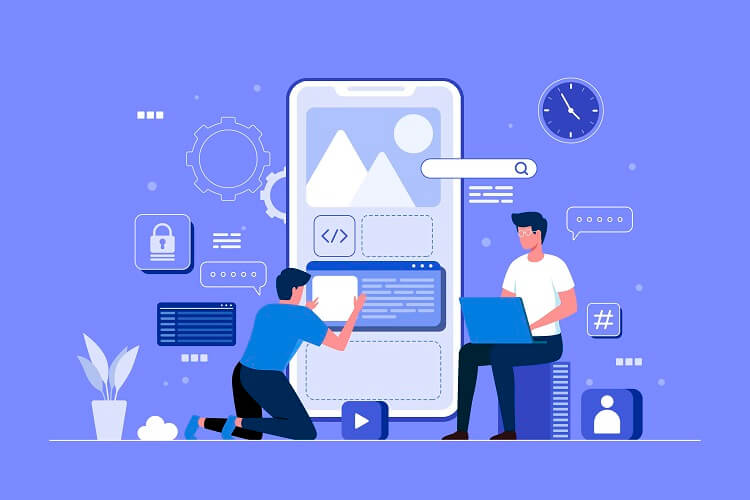
In competitive markets, customer loyalty is golden. Mobile apps offer a unique advantage by enhancing repeat business opportunities and referrals. They facilitate easy communication between businesses and customers, fostering continued engagement.
This ongoing interaction allows businesses to monitor and adapt to customer behaviors, improving satisfaction cost-effectively. Also, mobile apps help businesses plan better for the future and improve their products or services with things like reward programs, which encourage customers to buy again.
Mobile apps are great for marketing. By having people download the app, you naturally draw in those who are interested in what you offer.
This lets marketing teams use specific strategies based on how people use the app, making promotions more effective. Apps also let smaller businesses quickly start and change marketing campaigns without spending a lot, helping them to target their promotions better and quickly catch the interest of the market.
In today’s world, making sure online shopping is great is very important. As more people use the internet to buy stuff, businesses need to make their online shopping better to keep up and stay ahead. This change is necessary for growing and keeping customers.
Customers now want to be able to shop whenever and wherever they like. Mobile apps help with this by making it easy to buy things inside the app, offering a handy way to shop.
As more folks get used to shopping on their phones, companies are seeing more sales from smartphone orders. This shows just how key mobile apps have become for shopping today.
Omnichannel is a strategy that businesses use to provide their customers with a seamless and integrated shopping experience, no matter how they choose to shop: online from a mobile device or computer, by telephone, or in a brick-and-mortar store.
The idea is to connect all these channels so customers can switch between them effortlessly while still receiving a consistent level of service and engagement from the business. This approach helps in creating a more connected and personalized shopping experience for customers.
Mobile apps play an essential role in this strategy. They empower customers to make purchases directly from their smartphones, significantly enhancing the overall shopping journey. By making your services accessible through a mobile app, you bridge the gap between online and offline experiences, offering flexibility and convenience that today’s consumers expect.
For businesses looking to adopt this customer-centric strategy, understanding the app development process is crucial. Developing a mobile app that fits seamlessly into your omnichannel approach involves careful planning, design, and execution. It’s not just about creating an app; it’s about designing a tool that enhances your customer’s journey across all platforms.
Understanding customer preferences and behaviors is crucial. While customer surveys offer some insights, mobile apps provide a deeper understanding by tracking app usage, promotional interests, and direct feedback. This data is invaluable for maintaining positive customer relationships.
Imagine a coffee shop chain called “Cafe Delight” that has its own mobile app. Customers use the app to place orders, earn loyalty points, and receive exclusive offers. The app tracks what types of coffee and pastries are most popular, when people are most likely to place an order, and which promotions receive the most attention.
For example, “Cafe Delight” notices through the app that many customers order a specific type of latte on Monday mornings but that there’s also interest in health-oriented breakfast options that aren’t currently on the menu. Based on direct feedback collected through the app, customers express a desire for more gluten-free and vegan pastry options.
Using this detailed information, “Cafe Delight” decides to introduce a new line of healthy breakfast items and promotes it heavily through the app. The promotion includes a special offer for app users to try the new menu items at a discounted price.
As a result, “Cafe Delight” not only sees an increase in orders for the new menu items but also strengthens its relationship with customers by showing that it listens and responds to their preferences. This deep understanding and positive engagement help “Cafe Delight” maintain a loyal customer base and attract new customers looking for healthier breakfast options.
Mobile apps keep customers engaged over time through push notifications about new products and promotions. These notifications, coupled with targeted marketing based on user data, keep a brand prominently in customers’ minds, driving digital traffic and revenue growth.
The data collected through mobile apps presents vast opportunities for understanding customer patterns and responses to marketing strategies. When combined with data from other sources, like social media, businesses gain a comprehensive view of customer interests and trends, enabling them to tailor their offerings more effectively.
If you think it’s time for your business to have its own mobile app, get in touch with Liberty Technology. With our mobile applications services, we will help you figure out what your app needs to do, build it for you, and show you how to get it to your customers.
Just send us an email at [email protected], and let’s start making your mobile app today!
This dive into mobile app development for businesses shows just how crucial it is in today’s online world. From improving how customers interact with your business to providing unmatched insights into the market, the benefits of mobile apps are wide-ranging. Every business looking to expand should think about the benefits of mobile apps and include app development in its main digital strategy.
In essence, the development of a mobile application is not just a technological advancement; it’s a strategic move toward securing a business’s future in an increasingly digital world.
Phnom Penh, Cambodia – March 9, 2024 – A remarkable event unfolded at the Grand Star Platinum in Phnom Penh, Cambodia. Dubbed the “Influence Launch Event: The Gateway To Multiverse Marketing” this event not only celebrated the grand opening of Influence Media but also highlighted its innovative strides and future prospects in the digital marketing arena. The event drew heavyweight guests from the political, business, and entertainment sectors to witness this pivotal moment.
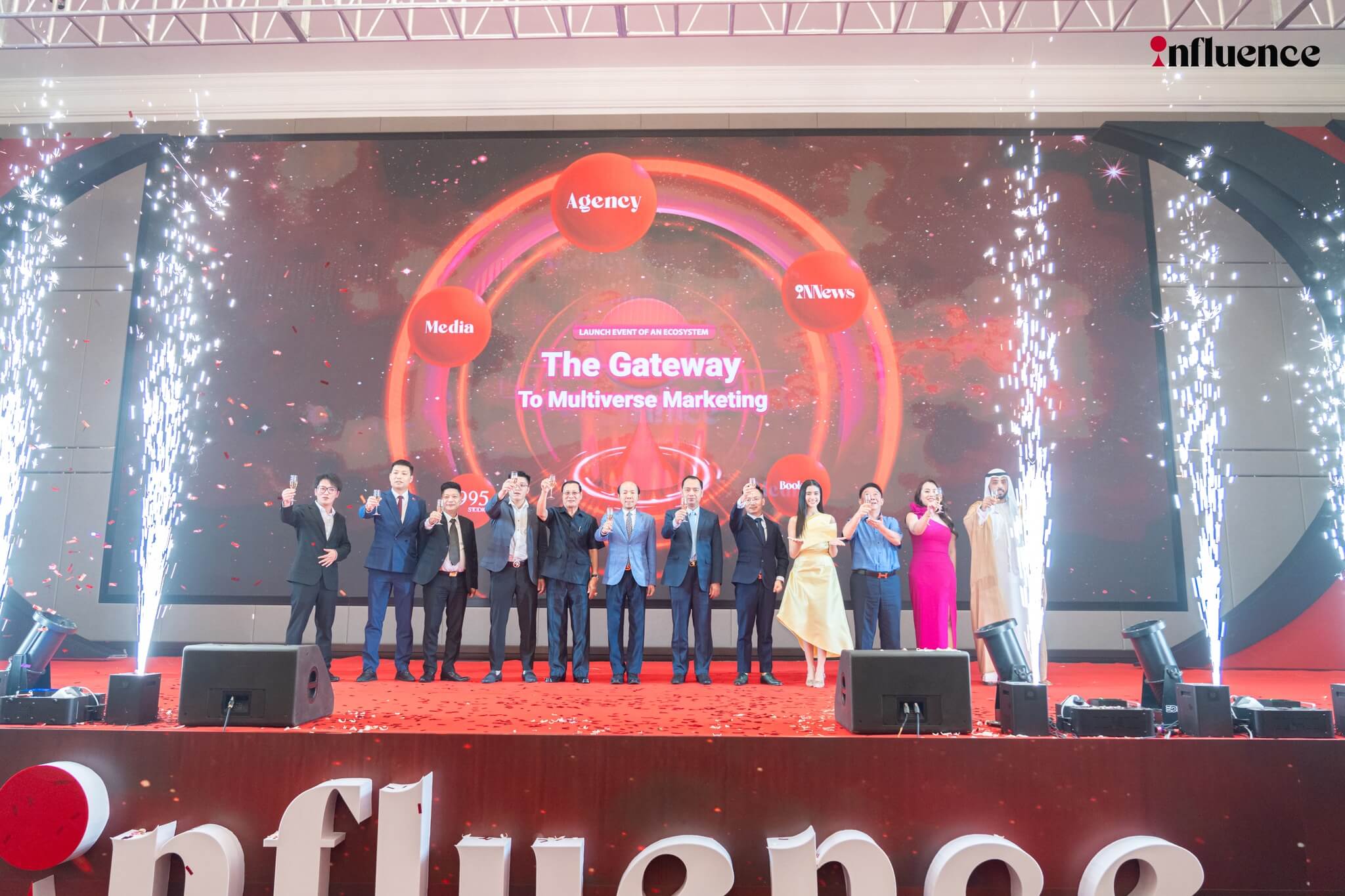
In a momentous display of innovation and collaboration, Liberty Technology proudly sponsored the highly anticipated Influence Launch Event in Phnom Penh, Cambodia. As a prominent player in the tech industry, Liberty Technology seized the opportunity to showcase its cutting-edge solutions and services to a diverse audience of industry professionals, enthusiasts, and potential clients.
At the heart of Liberty Technology‘s showcase were its AI Biometric solutions and website & app development services. Visitors to the booth were treated to live demonstrations of Liberty Technology’s advanced biometric systems, showcasing their accuracy, speed, and reliability. Additionally, Liberty Technology highlighted its expertise in website and app development, showcasing its portfolio of successful projects and demonstrating its ability to deliver bespoke digital solutions tailored to each client’s needs.

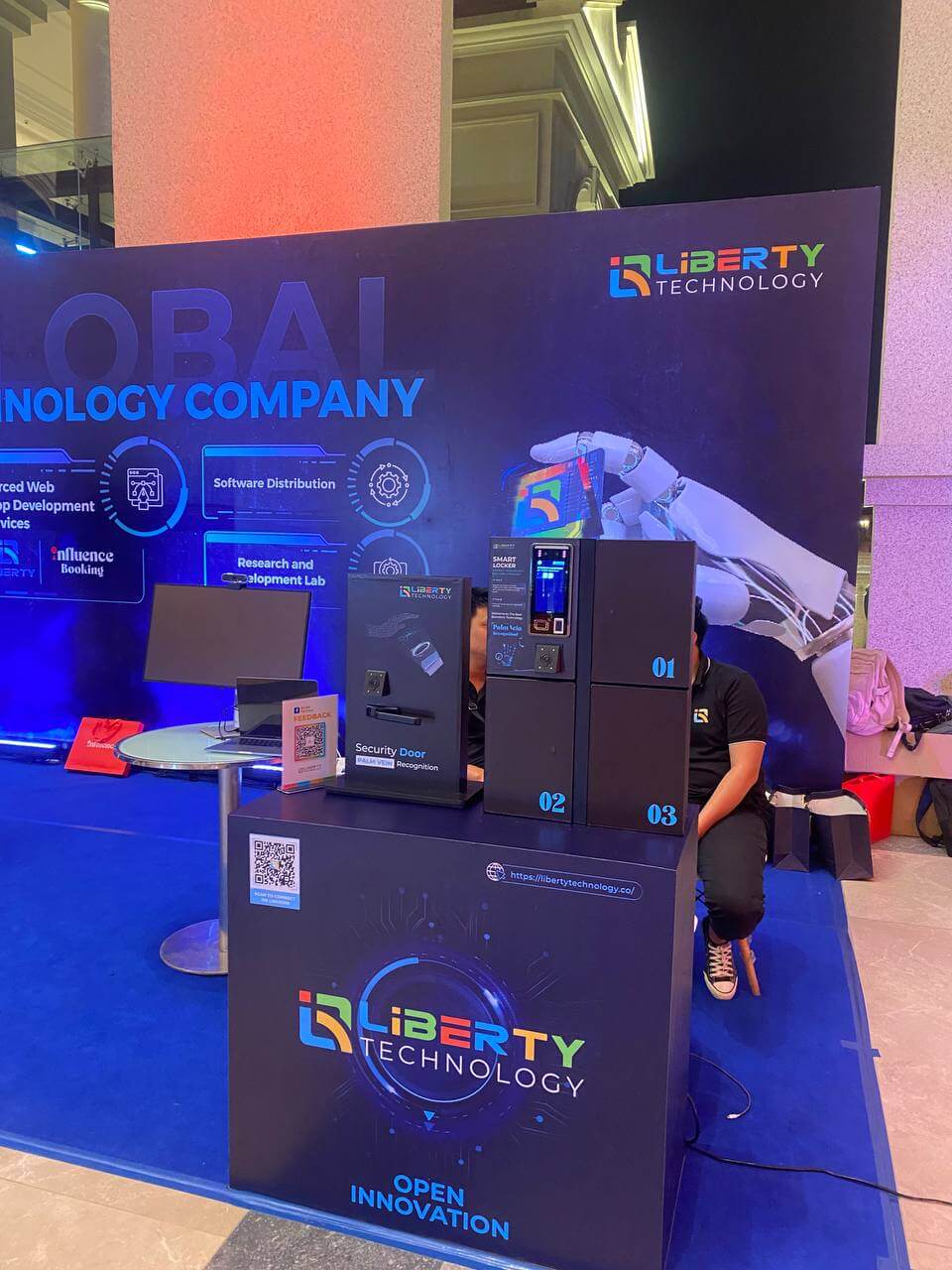
Throughout the event, Liberty Technology was honored to welcome a steady stream of visitors to its booth, including industry professionals, potential clients, and curious tech enthusiasts. The team engaged in insightful discussions, answered questions, and forged valuable connections with individuals eager to explore the possibilities offered by Liberty Technology’s innovative solutions and services.

As the Influence Launch Event drew to a close, Liberty Technology extended its sincere gratitude to all who visited its booth. The overwhelming positive feedback and enthusiasm received reaffirmed Liberty Technology’s commitment to driving innovation and delivering excellence in the ever-evolving tech landscape.

In closing, Liberty Technology congratulates the organizers of the Influence Launch Event on a resounding success. With its impactful presence and compelling showcase, Liberty Technology looks forward to continued collaboration, growth, and innovation in the tech industry, empowering businesses and individuals alike with transformative digital solutions.
Ready to elevate your career in 2024? Liberty Technology is seeking passionate, talented individuals to join our dynamic team. Join us to embrace a culture of innovation and growth, and contribute to solutions that positively impact the world.
We are looking for passionate individuals in a variety of roles, including Business Intelligence Team Leader, Backend Team Leader, Business Analyst Team Leader, Front End Website Leader, IT Helpdesk Team Leader, and Scrum Master Team Leader. Explore our open positions and apply today!

Liberty Technology is seeking a visionary leader to guide the development of our transformative data-driven system. In this role, you’ll collaborate with cross-functional teams to design impactful solutions and deliver actionable insights that drive our business forward. Read more about this job description here.
Join our dynamic team as a Backend Team Leader! If you’re passionate about Node.js, software design, and leading talented developers, this is an opportunity to build cutting-edge solutions and advance your career. To apply, please refer to the job description here.
Liberty Technology seeks a skilled Business Analyst Team Leader to guide our team in translating complex business requirements into clear technical specifications. This role combines strong analytical abilities with leadership skills to drive successful project outcomes and support the growth of our business analytics team. Read more about the job description here.
Become our Front End Team Leader and shape the future of our user interfaces! You’ll mentor developers, drive technical strategy with Vue3/Nuxt3, and ensure the scalability and performance of our web solutions. This is an opportunity to build a high-performing team and advance your leadership skills. Interested? Learn more about the job description here.
We’re looking for an IT Helpdesk Team Leader who blends technical expertise with a passion for customer service. In this role, you’ll guide our support team, collaborate cross-functionally to solve complex issues and maintain robust IT systems to deliver an exceptional employee experience. What are you waiting for? Apply here.
Become our Scrum Master Team Leader and be a catalyst for successful software development! You’ll foster exceptional team communication, collaborate closely with Product Owners, resolve impediments proactively, and track metrics to drive informed decision-making within an Agile environment. Read more about the job description here.
——————————————-
If you are interested in any of the roles above, don’t hesitate and apply today! Please send your CV/PORTFOLIO to the email: [email protected]
Follow us to reach more excited information:
Official Facebook: https://www.facebook.com/Libertytechnology99/
Website: https://libertytechnology.co/
LinkedIn: https://www.linkedin.com/company/liberty-technology-company/
Email: [email protected]
Hotline: 023 868 683
Understand how customers interact with your digital platforms. Identify opportunities to enhance their experience and drive engagement. Discover how web & app development can transform your business or launch your tech career.
This comprehensive overview breaks down the fundamentals, giving you a strong foundation to understand the power of digital development. Learn about the essential tools, technologies, and processes behind creating the digital experiences we rely on daily.
To compete in the digital world, it is important to establish a strong online presence with a website or mobile app. It will make your business accessible 24/7, therefore expanding your potential customer base.
Even so, establishing a high-quality web or mobile application can be difficult, especially if you lack the required internal technical abilities or expertise. Therefore, at Liberty Technology, we are devoted to helping you improve your business with our web & app development services.
Liberty Technology offers a comprehensive suite of development services to elevate your digital presence. Our expertise includes:
Don’t miss out! Contact Liberty Technology now to seize digital opportunities and drive your business forward.
Email: [email protected]
Phone: 023 868 683
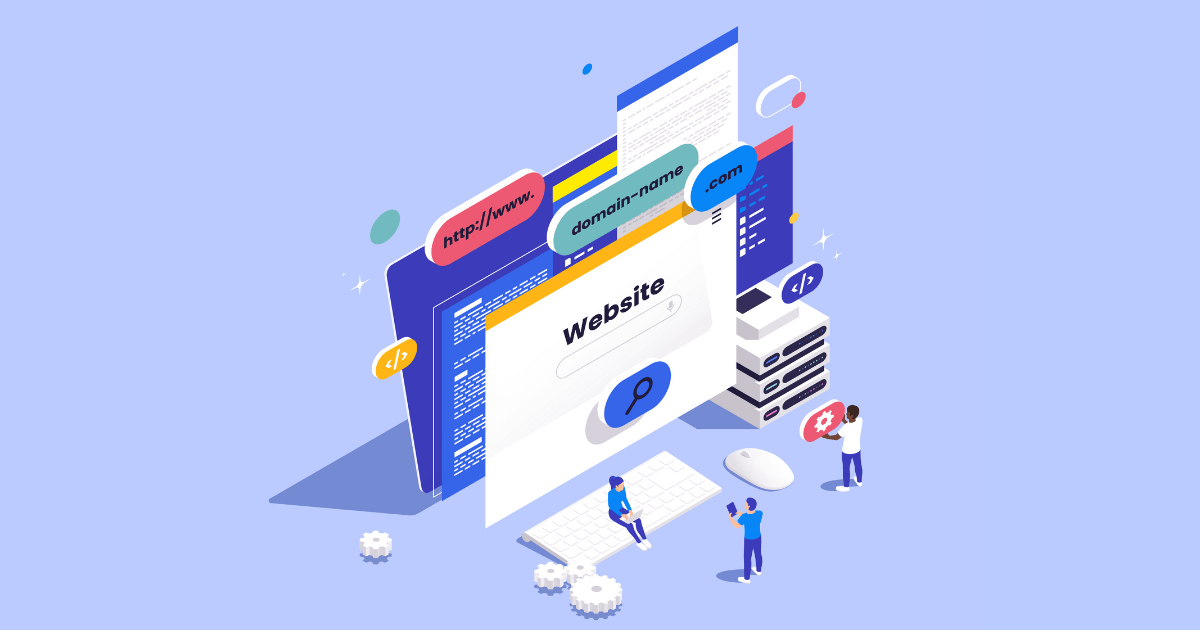
Don’t get left behind in this digital world. If you are a business owner in this digital era, you should understand how a simple website can help advance your business to another level. In this section, we will walk you through the basics of understanding web development, from the definition to the detailed processes of creating a basic website.
A website consists of several linked web pages. These web pages are documents written in HTML (Hypertext Markup Language). They contain text, pictures, videos, and other digital files that are hosted on one domain name. Imagine it as a digital space, similar to a house, where various rooms, or web pages, are interconnected.
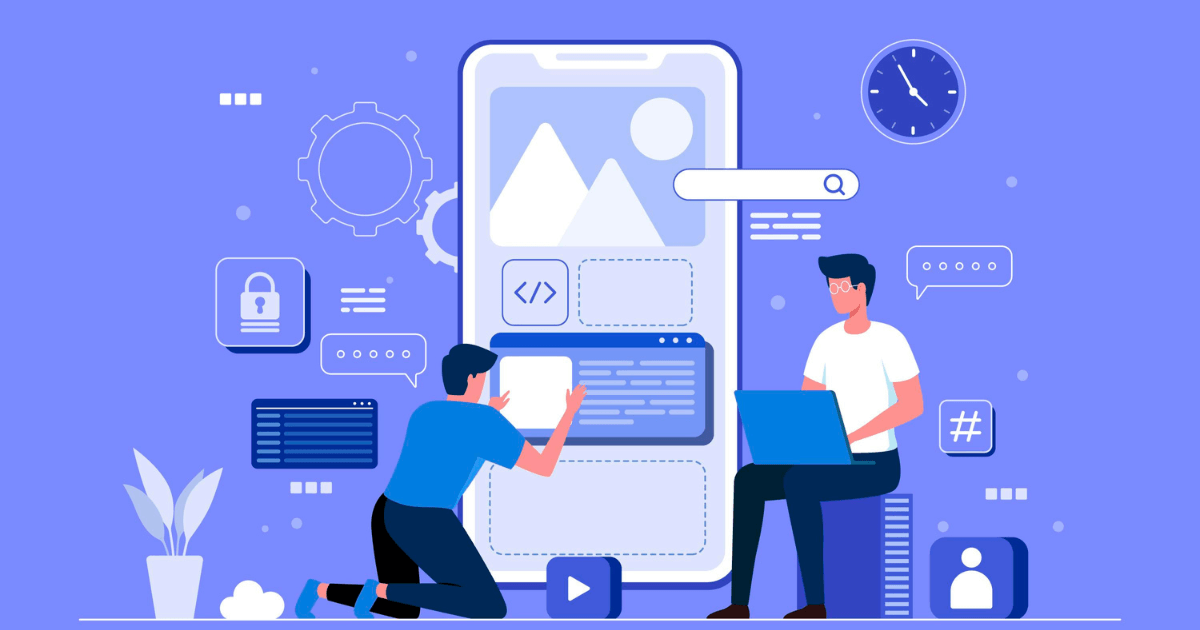
Unlock the potential of mobile apps for your business! In this section, we’ll cover the fundamentals of app development, empowering you to create impactful digital solutions.
An application, often shortened to “app,” is a software program designed specifically for mobile devices like smartphones, tablets, or smartwatches. Unlike the broad software on your computer, apps are built for focused tasks or entertainment. You need to download and install them on your device to use them.
This is everything a user sees and interacts with in a mobile app. It is the first thing users judge, so an attractive and intuitive design draws them in. Here are some sub-components of a mobile app front-end.
While the front-end is what users see, the back-end is the hidden engine that makes everything work. Key components include:
Servers are powerful computers that host the back-end code and databases of the app. These handle requests coming from the app and send back the necessary data.
Databases are structured systems that store and organize all the app’s crucial information. This could include user profiles, product inventories, or anything else the app needs to function.
These are like bridges that allow the front-end and back-end to talk to each other. APIs define how the app requests data or performs actions on the server.
These apps are built for a specific platform (iOS or Android) using their native programming languages (Swift/Objective-C for iOS, Java/Kotlin for Android). They offer the best performance and access to all device features. You can find these apps on Apple App Store and Google Play Store.
A web application (web app) is software you access directly through your web browser (Chrome, Safari, etc.). They’re built using web technologies (HTML, CSS, and JavaScript) and don’t require downloads or installation. This means you can use them on any device with an internet connection. Here are some examples of web apps: Gmail, Google Docs, Facebook, X (formerly Twitter), and many more.
A hybrid app is a combination of both native and web apps. Hybrid apps are built with web technologies (HTML, CSS, JavaScript), like a web app. The core code is packaged into a thin native app container, allowing it to be distributed through App Store and Play Store. Hybrid apps can access some device features (camera, GPS, etc.) that basic web apps cannot.
Progressive Web Apps (PWAs) are a powerful trend in web development. These apps offer the benefits of both traditional websites and native mobile apps. They’re installable to a home screen, provide offline functionality, load quickly, and can even utilize features like push notifications. PWAs blur the lines between web and app experiences, providing a seamless and accessible user experience, particularly beneficial for mobile users.
Low-code development platforms are revolutionizing the way we build software. These tools offer visual, drag-and-drop interfaces for creating apps, significantly reducing the need for extensive coding. This leads to faster development times and makes app creation accessible to businesses and individuals without specialized technical backgrounds. Ultimately, low-code platforms democratize development, driving innovation and allowing more people to solve problems through custom software solutions.
The integration of Artificial Intelligence (AI) is transforming how apps function. AI algorithms can power a wide range of features, from image recognition and natural language processing in chatbots to in-depth data analysis. This translates to significant benefits: apps deliver personalized experiences for each user, automate routine tasks, and uncover valuable insights from data. Ultimately, AI integration makes apps smarter and more responsive to individual needs, leading to increased efficiency and user satisfaction.
In summary, we hope this article gives you a comprehensive overview of web & app development. From building brand awareness to streamlining processes, websites and apps offer businesses a competitive edge. Embrace the power of web and app development to reach new customers, enhance user experience, and drive growth.
Here are some top tools that empower developers to create amazing digital experiences.
Front-End
Back-End
First, to view a website, the user must type in the web address (URL) in their browser’s address bar. For example: (https://libertytechnology.co/).
Second, the browser sends a request to the web server hosting your website. It asks the web server for permission to see the website.
Third, if the request is successful, it sends all the website files back to the user’s browser.
Finally, the user’s browser translates the code. It uses instructions (HTML, CSS, and JavaScript) to build the website you see on the screen.
User Experience (UX) plays a pivotal role in the success of any web or mobile application. Focusing on the ease, intuitiveness, and overall enjoyment of using a product significantly impacts user satisfaction, brand loyalty, and conversion rates. In today’s competitive digital landscape, prioritizing excellent UX is not just an additional feature, but a key differentiator that can determine whether your app thrives or gets lost in the crowd.

77 Le Trung Nghia Street, Ward 12, Tan Binh District, Ho Chi Minh City, Vietnam
07 67 67 1368
Services
Resources